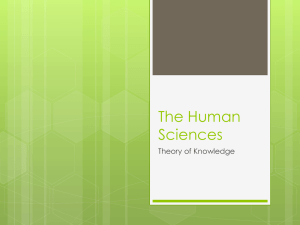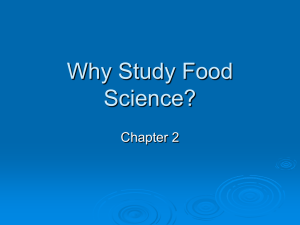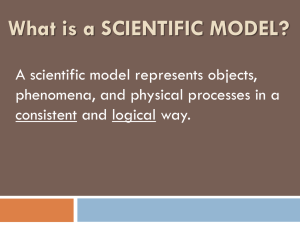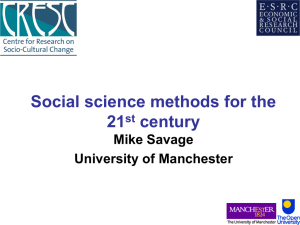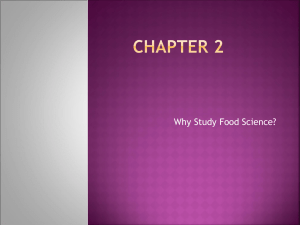Scientific Models: Explanation and Use
advertisement
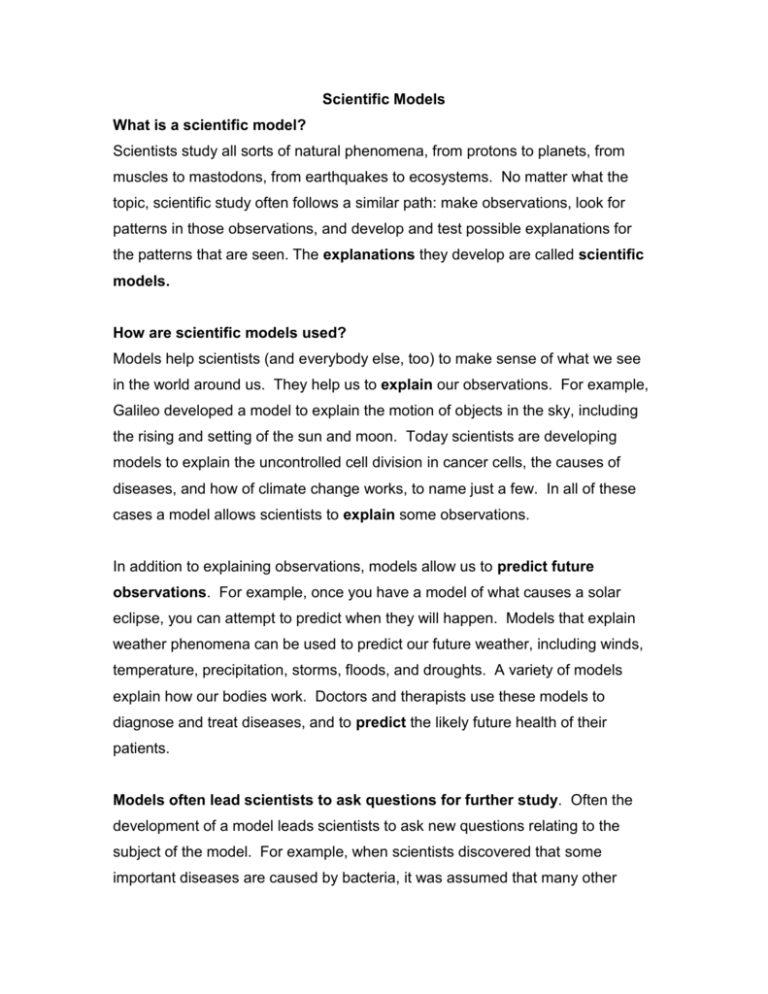
Scientific Models What is a scientific model? Scientists study all sorts of natural phenomena, from protons to planets, from muscles to mastodons, from earthquakes to ecosystems. No matter what the topic, scientific study often follows a similar path: make observations, look for patterns in those observations, and develop and test possible explanations for the patterns that are seen. The explanations they develop are called scientific models. How are scientific models used? Models help scientists (and everybody else, too) to make sense of what we see in the world around us. They help us to explain our observations. For example, Galileo developed a model to explain the motion of objects in the sky, including the rising and setting of the sun and moon. Today scientists are developing models to explain the uncontrolled cell division in cancer cells, the causes of diseases, and how of climate change works, to name just a few. In all of these cases a model allows scientists to explain some observations. In addition to explaining observations, models allow us to predict future observations. For example, once you have a model of what causes a solar eclipse, you can attempt to predict when they will happen. Models that explain weather phenomena can be used to predict our future weather, including winds, temperature, precipitation, storms, floods, and droughts. A variety of models explain how our bodies work. Doctors and therapists use these models to diagnose and treat diseases, and to predict the likely future health of their patients. Models often lead scientists to ask questions for further study. Often the development of a model leads scientists to ask new questions relating to the subject of the model. For example, when scientists discovered that some important diseases are caused by bacteria, it was assumed that many other diseases are also caused by bacteria, which led to the understanding (and cure) of many more diseases. In this way, models have led to rapid advances in many fields of science and technology, including the revolutions in genetics and electronics that are happening today. How are models communicated? In order to communicate their models, these scientists represent them with drawings, graphs, equations, three dimensional structures, or words, but the scientific model is the idea itself. Tools like drawings and graphs are just ways of communicating their ideas (models) to others. For example, when you looked at the black box in 6th grade, you looked for patterns in your observations, and tried to develop an explanation of how the box might work. Your idea of how the box worked was your model. In order to communicate your idea to the other scientists in your class, you used words, drawings and perhaps a threedimensional structure (your own working box). These, however, were representations of your model. Soon you will have a chance to be scientists yourselves: during the next several weeks, you will be developing models to explain a number of genetic phenomena such as how seeds that are round and wrinkled only have round peas for “kids.” How do you decide whether a model is “right”? A community of scientists may have more than one model to explain a given phenomenon, just as many models were proposed to explain the observations you made in your “black box.” Were all of these models equally valid? To ask which model is “right” is the wrong question. Models are judged as to whether or not they are “acceptable” or “useful”, but not whether they are “right”. Judgment of the acceptability or usefulness of models is based on three factors: 1. Can the model explain all the observations or, as you may have experienced, explain some, but not all? 2. Can the model be used to predict the behavior of the system if it is manipulated in a specific way? For example, could your model predict when water would come out of the box or what volume of water would come out? 3. Is the model consistent with other ideas we have about how the world works? Any model needs to be realistic. Our model of the structure of atoms involves subatomic (little) particles such as protons, neutrons, and electrons. Many observations support this model even though nobody has ever seen inside an atom to be able to tell whether this model is “right” or not. It meets the three criteria above very well, and is very useful in that it helps us to predict what happens in the chemistry of atoms. It is entirely possible for more than one model to be accepted to explain the same phenomena. It is not always possible to exclude all but one model. For example, physicists have two very different models that explain observations of light. One model describes light as a series of waves, and the other describes light as particles called photons. Both models are useful and each helps to explain different things about light. In the same way, more than one model of the black box could be acceptable and useful, as long as they meet the three criteria: 1) agree with the observations, 2) could be used to make predictions, and 3) goes along with what we know about how the world works (is realistic.) Do scientific models ever change? In 6th grade you developed a model to explain the workings of your black box. Your model probably changed as you made new observations and exchanged ideas with other groups. In the same way, scientists often change (or even give up completely) models as they make more observations and as they exchange ideas with other scientists. Just as you did, these scientists make changes in order to make their models better fit the observations, better able to predict new observations, or goes along with other knowledge. Historically, many important scientific models have changed a great deal in light of new data and new ideas. For example, at one time scientists thought that human sperm contained a tiny, preformed person (a “homunculus”) and that the human egg was mainly a source of food for the developing living thing. When more advanced microscopes allowed closer observation of sperm and egg, this model was given up. The current model- in which both egg and sperm contribute traits to the future living thing- is better able to explain the observation that living things inherit characteristics of both parents. Summary Models are useful tools for scientists as they try to make sense of the world around us. Models help us to understand complicated things in the world and they have been very valuable in the tremendous scientific and technological advances that we have seen, including those in medicine, genetics, electronics and engineering. Next time you get a vaccination, buy a CD, or ride in a car or bus, consider the many scientific models that were involved in the development of these technologies. 1. Models are ideas that scientists use to explain patterns that have been observed in the world. 2. Models are judged to be acceptable or not based on how well they can a. explain data, b. predict future data c. how they go along with what is already known about the world (be realistic.) 3. Models are constantly being used to ask more questions about the world, and when new data are gathered, models are revised or even discarded altogether. Scientific knowledge does not stay the same, but is always changing.



